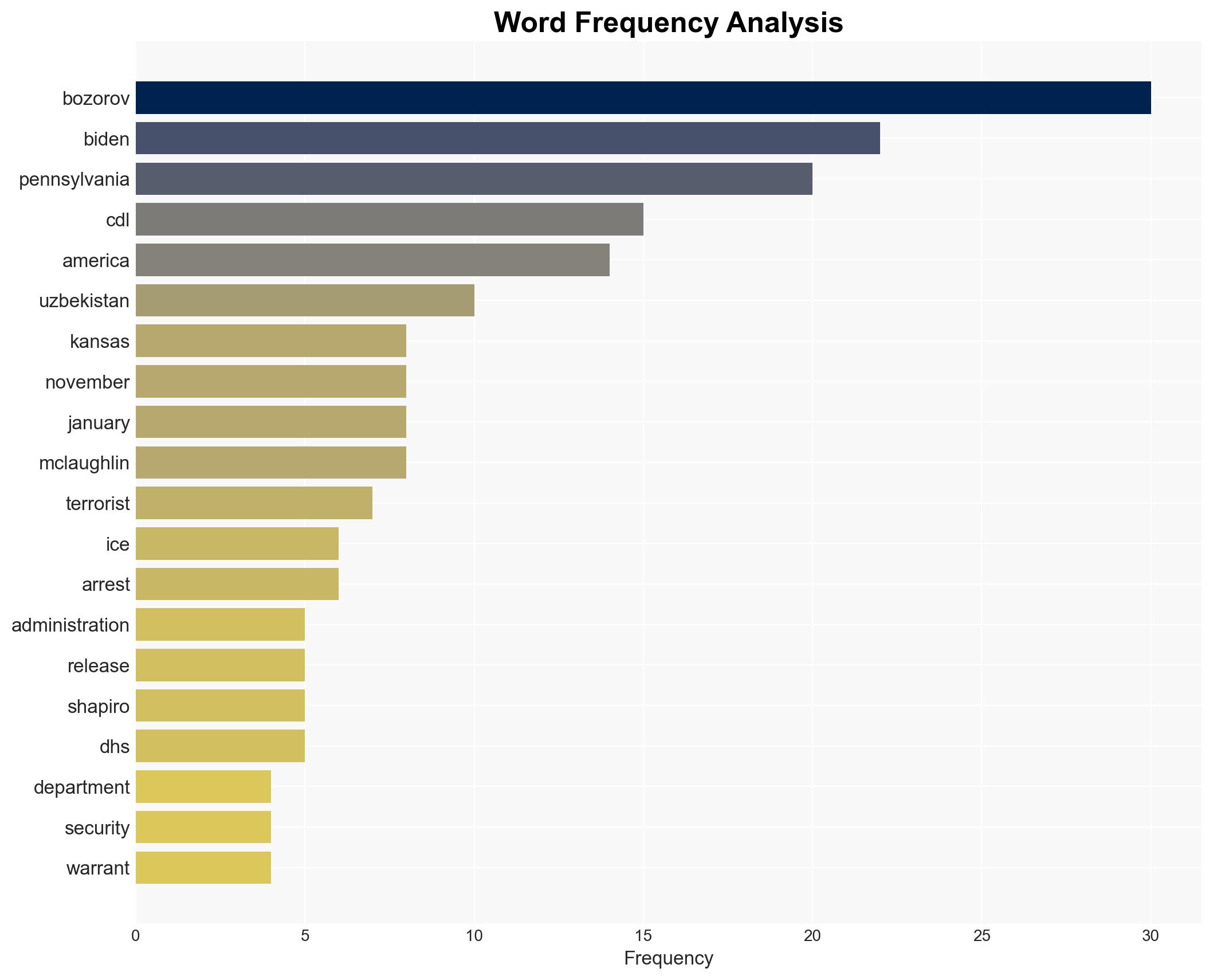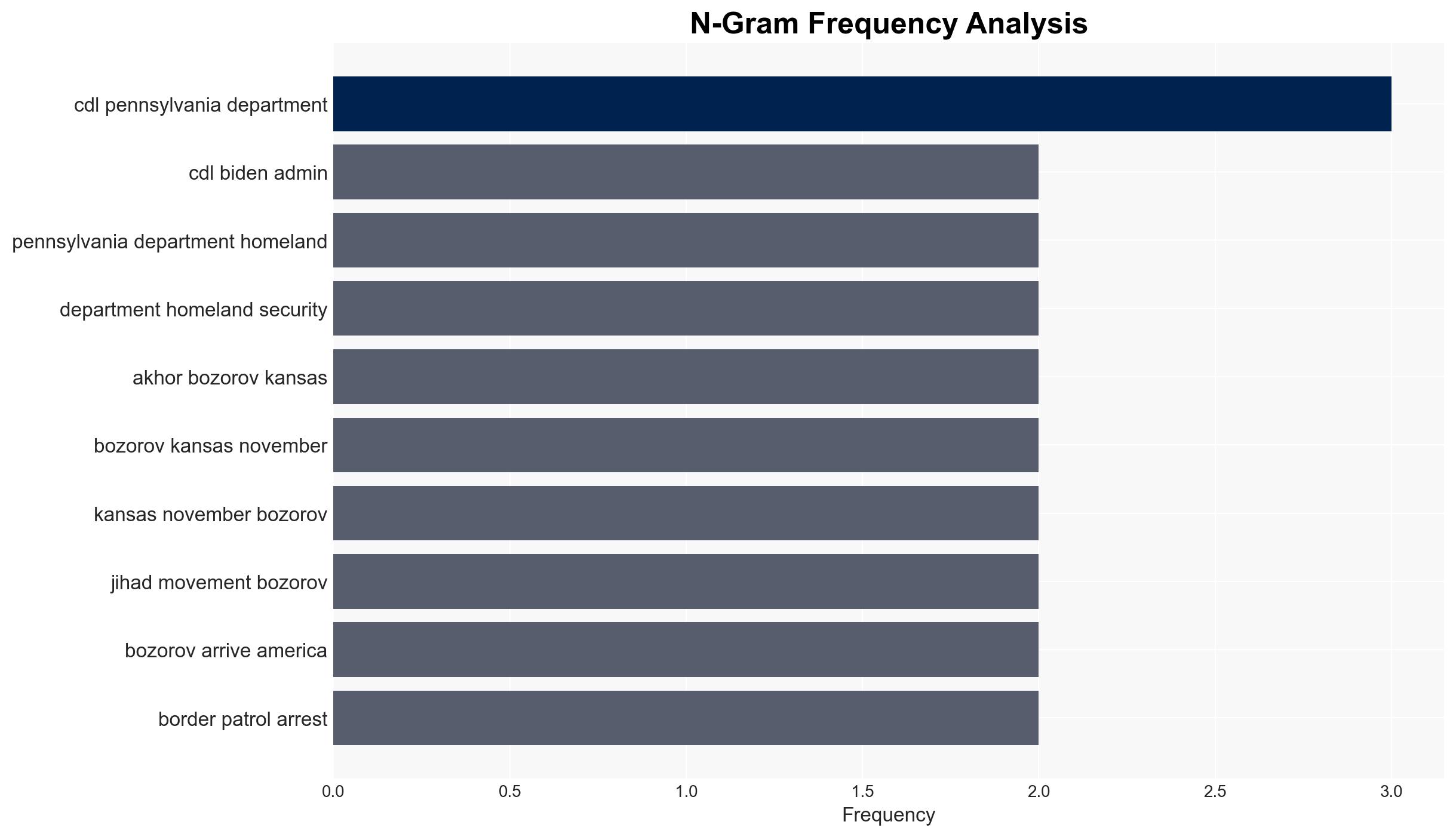ICE Arrests Uzbekistan Terrorism Suspect Who Was Given CDL During Biden Admin – Legalinsurrection.com
Published on: 2025-11-18
AI-powered OSINT brief from verified open sources. Automated NLP signal extraction with human verification. See our Methodology and Why WorldWideWatchers.
Intelligence Report:
1. BLUF (Bottom Line Up Front)
The most supported hypothesis is that systemic procedural failures within U.S. immigration and security frameworks allowed Akhror Bozorov, a suspect with potential terrorist affiliations, to enter and operate within the United States. Confidence level: Moderate. Recommended action includes a comprehensive review of immigration and security protocols to prevent similar occurrences.
2. Competing Hypotheses
Hypothesis 1: There was a systemic failure in the U.S. immigration and security processes that allowed Bozorov to enter and gain employment authorization despite his background.
Hypothesis 2: Bozorov’s entry and subsequent activities were facilitated by deliberate deception and manipulation of U.S. immigration systems by external actors.
Hypothesis 1 is more likely given the documented procedural lapses and lack of inter-agency coordination. Hypothesis 2 lacks direct evidence but remains plausible due to the potential for exploitation by organized networks.
3. Key Assumptions and Red Flags
Assumptions: It is assumed that U.S. immigration and security systems have standard protocols for vetting individuals with potential terrorist affiliations. It is also assumed that there is a lack of real-time information sharing between international and domestic agencies.
Red Flags: The issuance of a Commercial Driver’s License (CDL) to Bozorov despite his background raises concerns about the vetting process. The timing of his work authorization and CDL issuance suggests potential oversight or procedural gaps.
4. Implications and Strategic Risks
The incident highlights vulnerabilities in immigration and security frameworks, potentially emboldening other actors to exploit similar weaknesses. This could lead to increased national security threats, including terrorism and espionage. Politically, this incident may fuel debates over immigration policies and border security, potentially impacting future legislation.
5. Recommendations and Outlook
- Conduct a thorough audit of immigration and security processes to identify and rectify procedural gaps.
- Enhance inter-agency communication and data-sharing protocols to ensure timely identification of threats.
- Best-case scenario: Improved security measures prevent future incidents, restoring public confidence.
- Worst-case scenario: Continued procedural failures lead to increased security threats and political instability.
- Most-likely scenario: Incremental improvements in security protocols with ongoing political debate over immigration policies.
6. Key Individuals and Entities
Akhror Bozorov, Josh Shapiro, Tricia McLaughlin.
7. Thematic Tags
Structured Analytic Techniques Applied
- Cognitive Bias Stress Test: Expose and correct potential biases in assessments through red-teaming and structured challenge.
- Bayesian Scenario Modeling: Use probabilistic forecasting for conflict trajectories or escalation likelihood.
- Network Influence Mapping: Map relationships between state and non-state actors for impact estimation.
Explore more:
National Security Threats Briefs ·
Daily Summary ·
Support us
·





